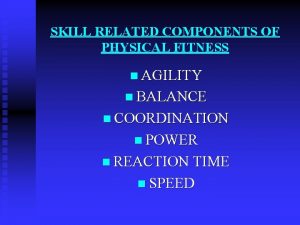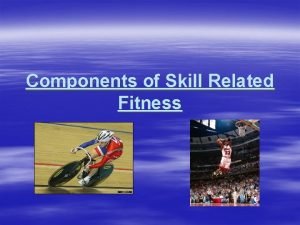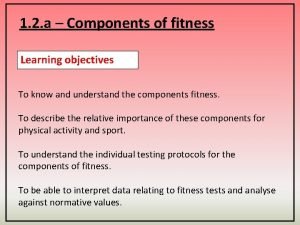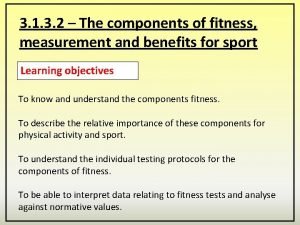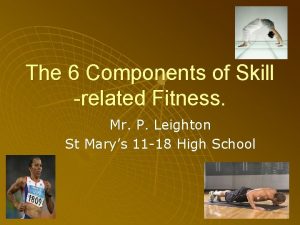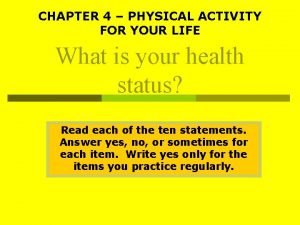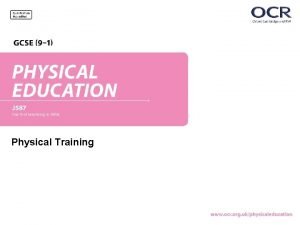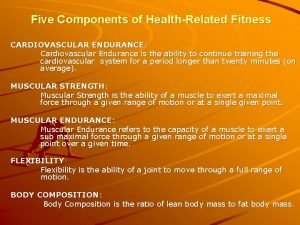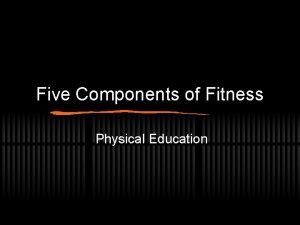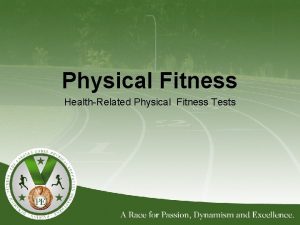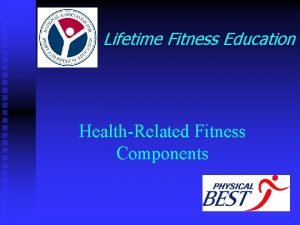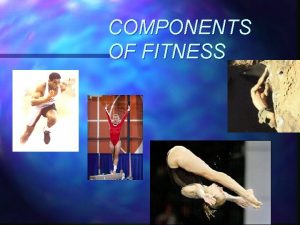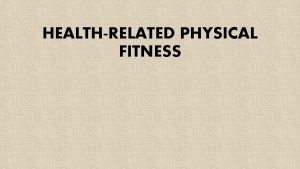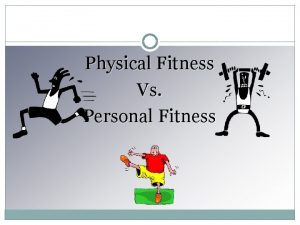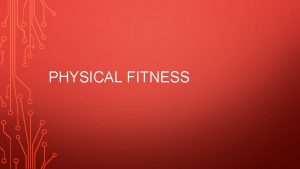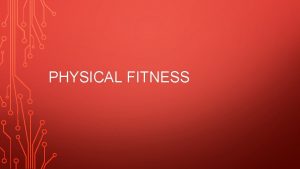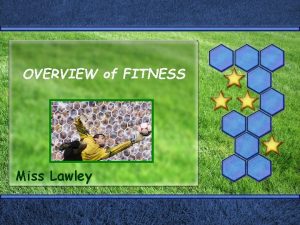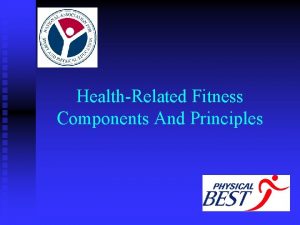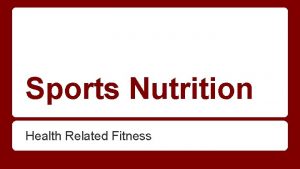COMPONENTS OF PHYSICAL FITNESS HEALTHRELATED FITNESS involves skills















- Slides: 15

COMPONENTS OF PHYSICAL FITNESS HEALTH-RELATED FITNESS • involves skills that enable one to become and stay physically healthy. SKILL-RELATED FITNESS • involves skills that will enhance one’s performance in athletic or sports events.

HEALTH-RELATED FITNESS

1. Body composition • In other words the ratio of fat to muscle. Minimum of fat and maximum of lean mass is a sign of a healthy and fit body.


2. Cardiovascular Fitness or Endurance Cardiovascular endurance can be defined as the component which helps to determine if the heart and lungs are working in coordination. • Cardiovascular exercises or aerobics walking, running, biking, rowing, treadmills

3. Flexibility • Flexibility can be defined as the component which checks the ability of the joints in the body to move to their full range of motion. Flexibility exercises - stretching, yoga, Tai Chi

4. Muscular Endurance • defined as the ability of the body to perform repeated exercises without getting tired. • Strength training exercises such as running, jogging, cross-training on an elliptical machine, etc.

5. Muscle strength • defined as the capability of the muscles to lift weight. • Weight training exercises - push ups, pull ups, biceps curls, pectoral fly, leg extensions, back extension, etc

SKILL-RELATED FITNESS

1. Agility • The ability to change and control the direction and position of the body while maintaining a constant, rapid motion. • Changing directions to hit a tennis ball.

2. Balance • The ability to control or stabilize the body when a person is standing still or moving. • For example, in-line skating

3. Coordination • The ability to use the senses together with body parts during movement. • For example, dribbling a basketball. Using hands and eyes together is called hand-eye coordination.

4. Speed • The ability to move your body or parts of your body swiftly. Many sports rely on speed to gain advantage over your opponents.

5. Power • The ability to move the body parts swiftly while applying the maximum force of the muscles. For example, fullbacks in football muscling their way through other players and speeding to advance the ball and volleyball players getting up to the net and lifting their bodies high into the air.

6. Reaction Time • The ability to reach or respond quickly to what you hear, see, or feel. • For example, an athlete quickly coming off the blocks early in a swimming or track relay, or stealing a base in baseball.
 Skill related physical fitness
Skill related physical fitness Coordination skill related fitness example
Coordination skill related fitness example It is the ability to release maximum force very quickly
It is the ability to release maximum force very quickly Hexagon agility test time
Hexagon agility test time Wall toss test normative data
Wall toss test normative data Physical fitness components
Physical fitness components Physical fitness test grade 9
Physical fitness test grade 9 Ruler drop test normative data table
Ruler drop test normative data table Give the 6 components of skill related fitness
Give the 6 components of skill related fitness Shaping aba cooper
Shaping aba cooper Way of life that involves little physical activity
Way of life that involves little physical activity Fitness related images
Fitness related images Components of fitness
Components of fitness Speed and agility frequency, intensity, time type
Speed and agility frequency, intensity, time type Halimbawa ng cardiovascular endurance
Halimbawa ng cardiovascular endurance Five components of fitness
Five components of fitness
